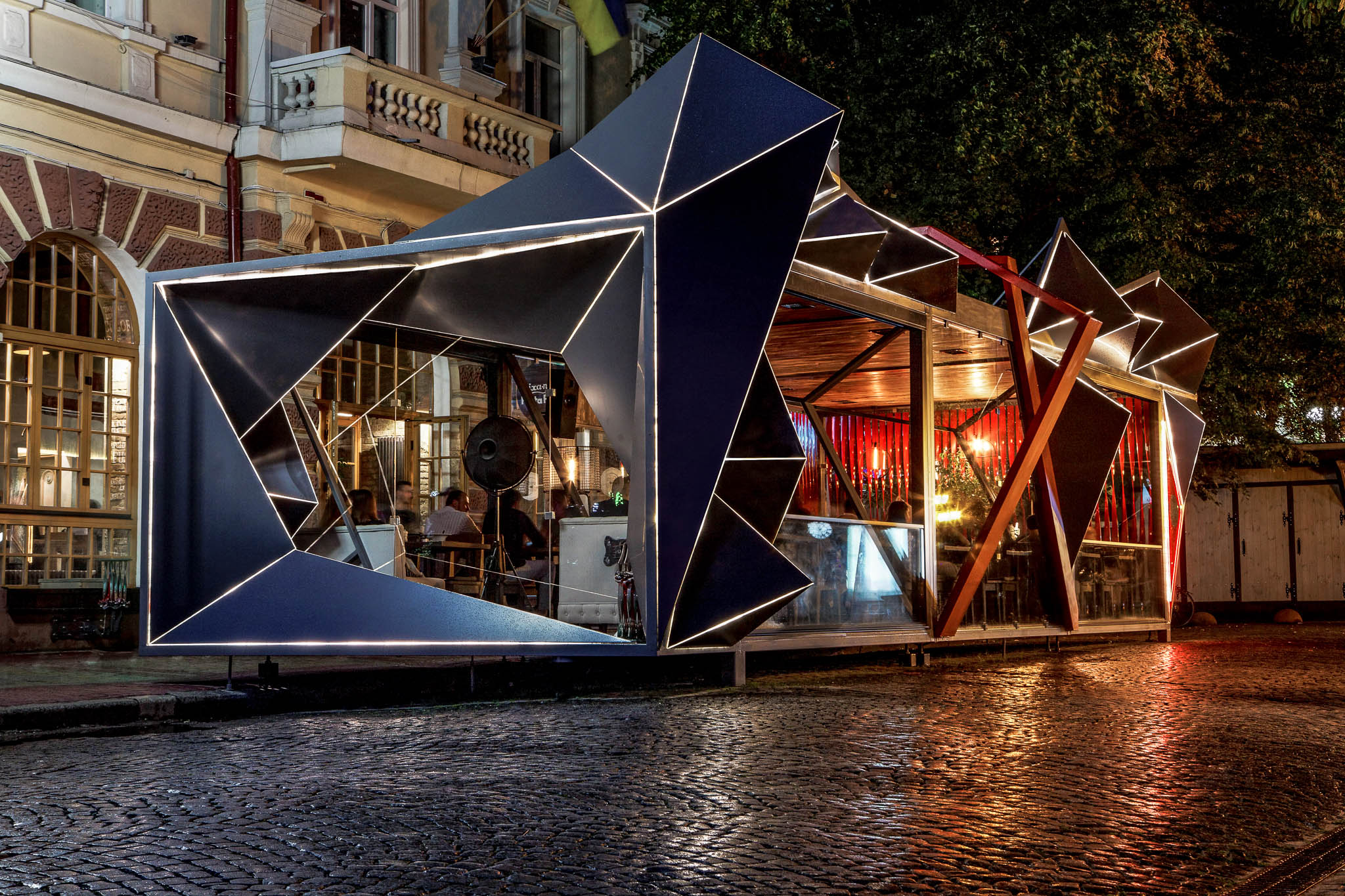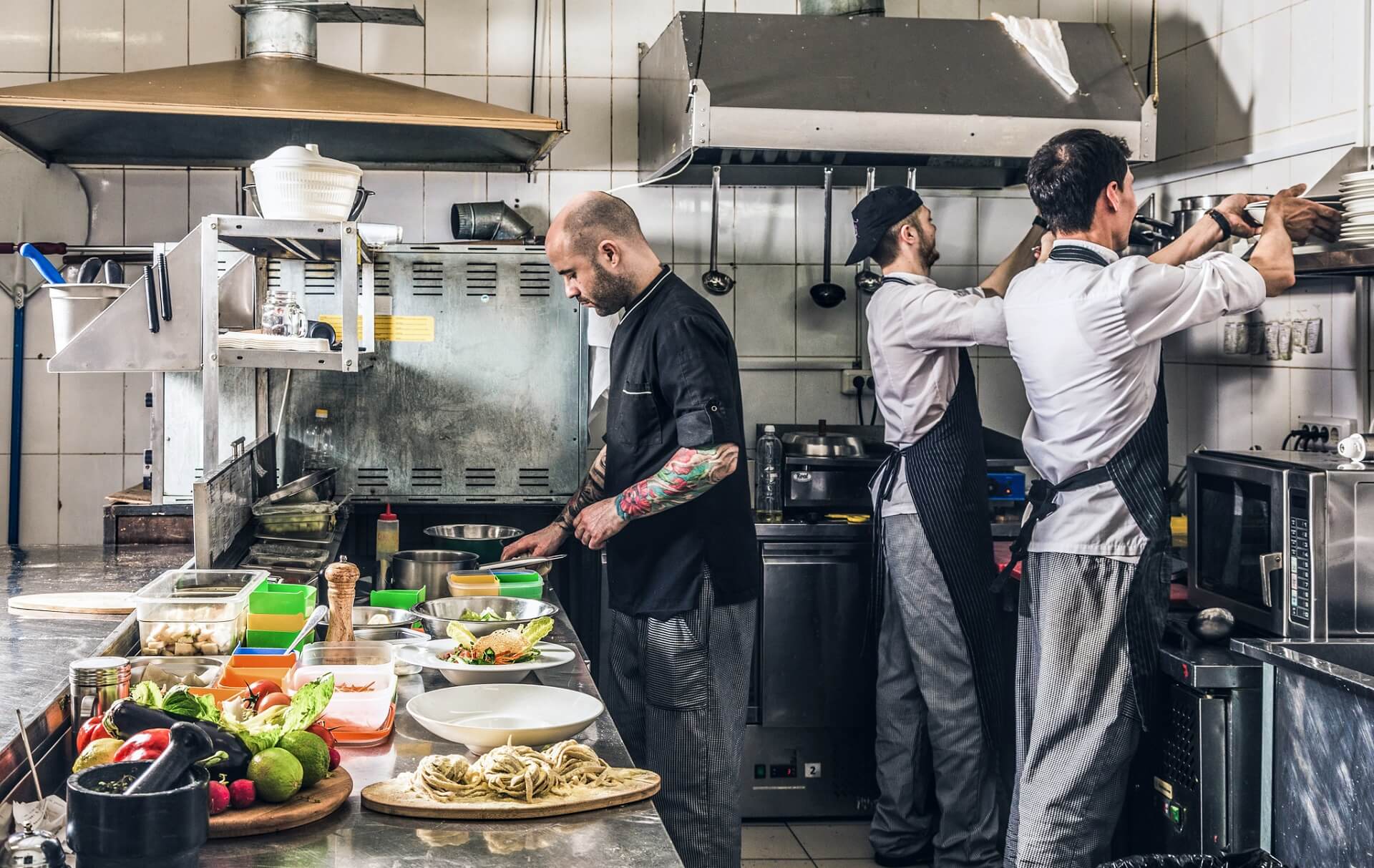Especially in the warmer months of the year “inside or outside” is a familiar question to diners visiting a restaurant. Prior to 2020, restaurants consisted of front of house and back of house, in the main. Today, many speak of “out of house”, referring to the spike in outdoor structures set up to allow restaurants to operate under strict Covid-19 restrictions.
Now, even as the pandemic has ended, a challenging economic climate means that operators are continuing to serve guests on pavements, patios, and rooftops. A nice-to-have before the pandemic, outdoor dining space has become essential to restaurants, firstly as a useful extra source of revenue and, secondly, a lifeline should the unexpected happen again.
Sieh dir diesen Beitrag auf Instagram an
In the northern hemisphere you know the spring and summer season has started when you can sit outside and enjoy your lunch or a cold drink while watching the world go by. But what elements should be considered before launching a space, beyond the dining room? What does it take to make a success of what is essentially an additional dining room? In short, advises Karen Malody FCSI, the owner of US-based Culinary Options, “Be prepared”.
These seven tips make your outdoor dining area successful
1. Check the rules
Though there has been a spike in outdoor dining and restaurants across the world has come up with increasingly innovative solutions – from yurts and pods to lounging areas and roadside dining – there are still rules and regulations to comply with. The first step should be to check what permits and licenses are required.
Many cities launched vastly relaxed schemes to help foodservice operators survive during the pandemic; e.g. New York’s Open Restaurant program is said to have saved 100,000 jobs in the sector and in a 2022 survey 91% of the city’s restaurants said keeping the scheme, was crucial to their survival but as local authorities’ continued work towards a permanent solution shows, this is an area in flux that needs to be thoroughly checked before building new structures.

Image: AdobeStock | vania_zhukevych
2. Space and style
Ensure that your outdoor area is a space that is suitable for dining – whether garden, patio, rooftop or pavement – and can comfortably accommodate people without any risk of elements that upset the enjoyable dining experience. Disguise any eyesores, such as bins or parking areas with flowers, big plant pots and other decorative devices.
“All tables and seating along with service stations and equipment, must be designed into the space. The type of equipment and their specifications must be able to withstand weather and outdoor conditions,” says William H. Bender FCSI, founder and principal at W. H. Bender & Associates.
You need a large space that can be pleasant for customers while comfortably fitting all chairs and tables,” says Germán Carrizo of Doña Petrona, a restaurant in central Valencia in Spain which has a large outside area for dining and drinking. He says it is vital to consider details such as the shifting light throughout the day.
”You really have to think through where the sun is at different times of the day as it will help you to plan on where it will be busier or quieter at different times,” he explains.

Image: Doña Petrona, Valencia
3. Maintain service levels
Maintaining the same high standards in an outside setting as the usual indoor dining room is crucial. “Speed of service cannot be one thing for outside diners versus inside diners, as a positive impression of the operation must be maintained regardless where a guest is seated,” says Malody. “Setting up a service station outside is critical to allow table resets, water replenishment, condiment requests and similar, without the server having to trek back into the interior dining area.”
4. Communicate with neighbours
Restaurants that are new to outdoor dining would do well to inform neighbours – especially if they are residential – of plans to extend to outside areas. Even if noise levels will not increase significantly, those around the restaurant will be sensitive to any risk of lowering their quality of life – and peace. Speak with them, explain your plans and how you comply with regulations, perhaps offer a discount for a first visit to encourage a good relationship. Beware the local residents’ power.
In New York City a group of residents sued the city to end what they called “the proliferation of outdoor dining” citing increased noise levels and in some case temporary structures that are no longer in use.
5. Prepare for potential outdoor challenges
Planning for an outdoor space is different from indoors and the considerations must match that. “Air flow in the dining and service space is important and you have to plan for wind,” says Bender. “What walls, buildings, or other structures are there that will change air flow? Plan for fans to move air and keep insects, birds, away. Nets may be installed to assist in this effort. Plan for sunlight glare. Will tables have umbrellas to shield guest from sun. The operator must strategically plan for all these factors.”
Sieh dir diesen Beitrag auf Instagram an
6. Weather-proof the space
Unless a restaurant is in a tropical location one of the most important considerations to keep in mind is likely to be the weather. Make sure that seating is easily protected from inclement weather conditions. This is also relevant for the furniture. The chairs and tables that work inside may not be durable enough for the contact with the pavement and the elements.
Heaters and umbrellas should all be considered. “Due to potential dust, wind and so on, special attention must be paid to carefully wiping all surface prior to service,” says Malody. “I have seen linens blow of tables when gusts of wind arrive; find a way to secure tablecloth edges in preparation for such an occurrence.”
7. Train your staff for outdoor dining
Do staff need specific training for serving outdoors? Most likely – you should think about, how to manage the smooth moving of plates of food and beverages from the bar or kitchen pass to the table outdoors. Speak with your staff and rehearse the choreography of how to move through the room. It is vital to establish norms and guidelines for working outdoors so even new (seasonal) staff knows how to work efficiently.
“Adding extra seating to front of house, in this case outside of the house, can put tremendous pressure on the kitchen,” says Malody. “You need to assess if the current staffing model can suffice to accommodate the extra volume, can you fit an extra body in the kitchen if there are spatial constraints? If a bit of menu engineering was done, might the operator be able to enjoy the extra volume without adding more labour and thus potentially eroding profit opportunities?”

Image: Adobe Stock | xartproduction
To make it work logistically, Carrizo says adding a channel to link kitchen and dining room with the outdoor space is vital. “To make the dining experience as positive outdoors as it is indoors, you should have a special section that serves the outdoors area. In Doña Petrona we have an exit window where we can deal with all the outdoor activity,” he says. “This is really useful because both the kitchen and the dining room can access this exit area.”
Last, but certainly not least, ensure there is enough staff on hand to pay attention to customers inside and outside. It is easy to feel like an afterthought if you are in the section with fewer guests. Hire more people if necessary.
Have a wonderful start to the outdoor dining season!
















